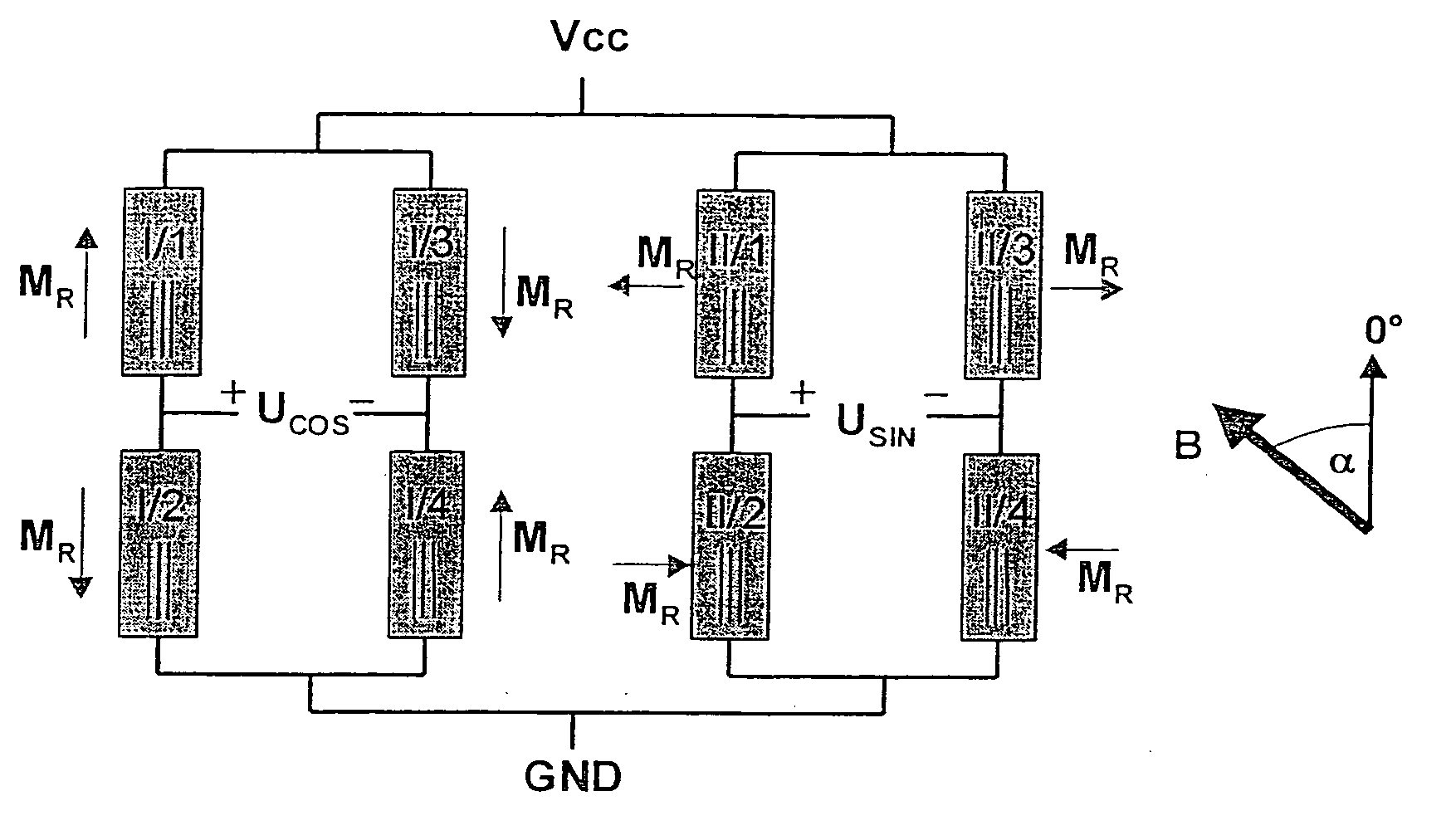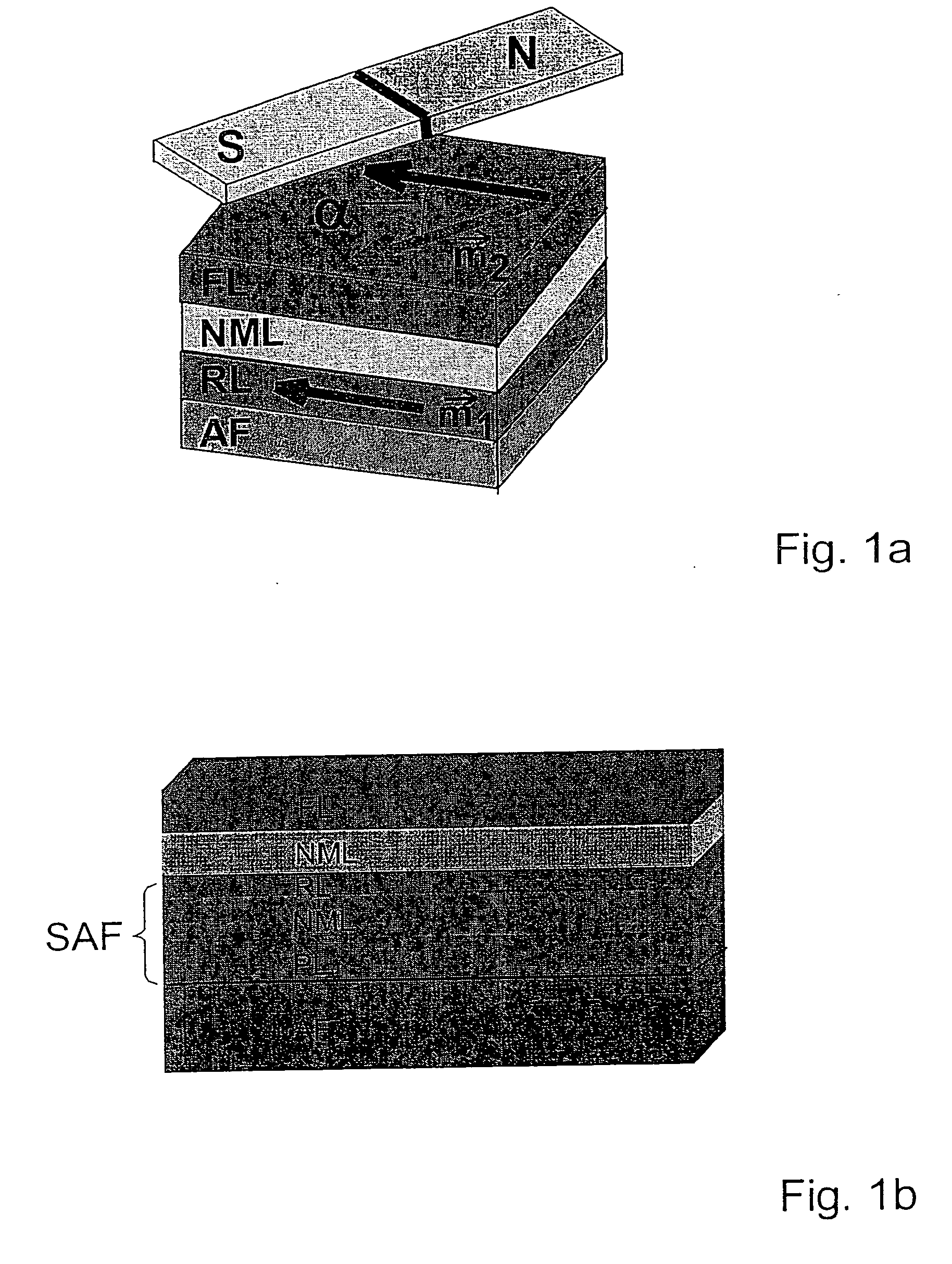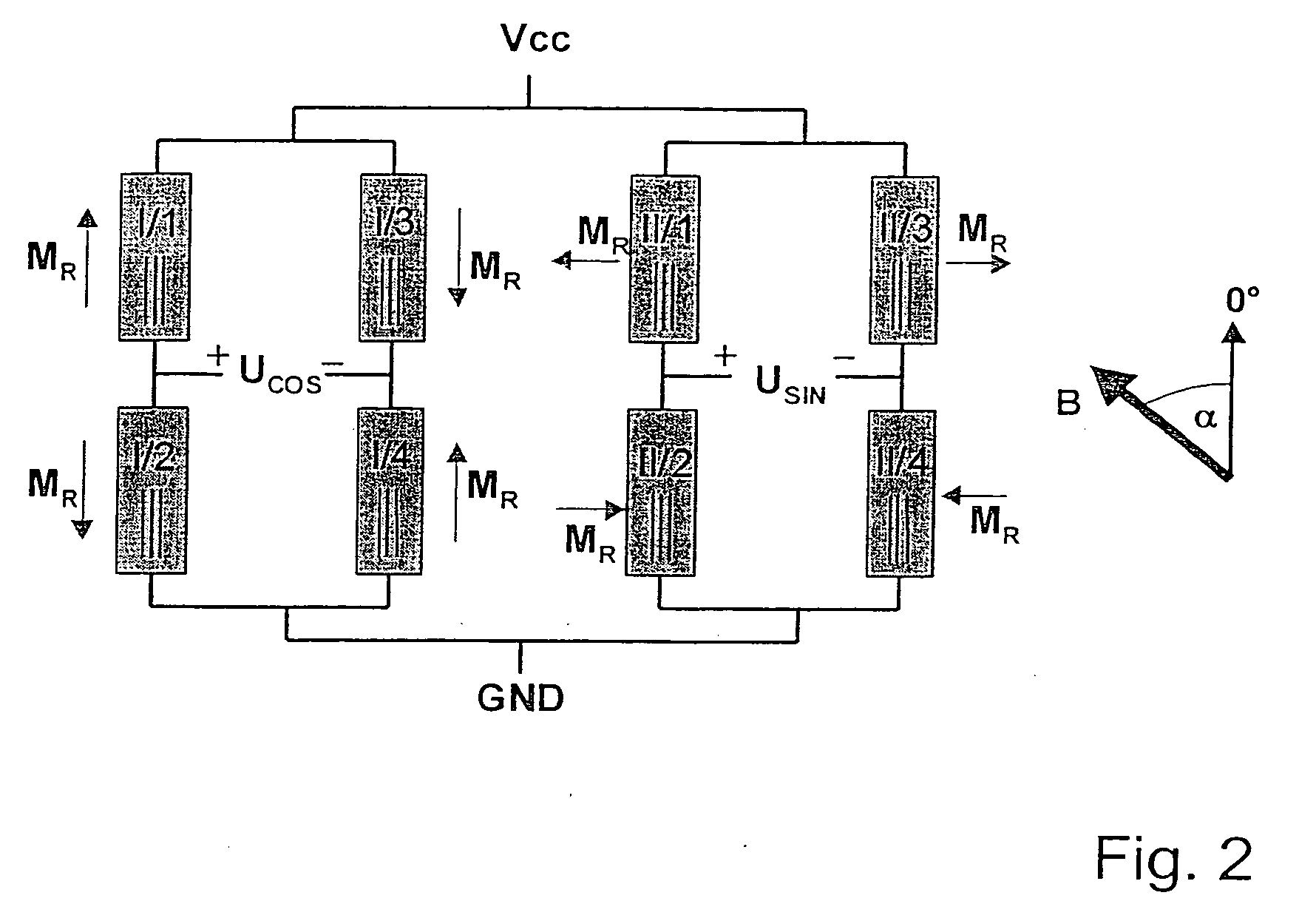Gmr sensor element and its use
a technology gmr sensor, which is applied in the direction of electric control, instruments, machines/engines, etc., can solve the problems of disadvantages of angular sensing accuracy and further offer the possibility of compensating, so as to improve the signal stability and long-term stability of gmr sensor element
- Summary
- Abstract
- Description
- Claims
- Application Information
AI Technical Summary
Benefits of technology
Problems solved by technology
Method used
Image
Examples
Embodiment Construction
[0030] a.) Rotationally Symmetrical Positioning
[0031]FIG. 3 shows a possible rotationally symmetrical positioning of altogether eight bridge resistor elements of two full bridges (Wheatstone's bridges). In contrast to AMR sensors, in which the reference direction is given by the current direction which is specified by the strip direction, in the case of the GMR angle sensor, the reference direction is specified by the direction of the magnetization of reference layer (RL). In principle, the pinning direction or reference direction may, in this context, be selected as desired, however, in order to obtain the same pinning behavior for all bridge resistor elements, in this case an orientation of the pinning direction or reference direction is selected that is less than 45° to the strip direction. This is made even clearer in FIG. 4, where, besides the strip direction (strip set inside the resistor symbols) the direction of the reference magnetization MR is also given.
[0032] b.) Imagi...
PUM
 Login to View More
Login to View More Abstract
Description
Claims
Application Information
 Login to View More
Login to View More - R&D
- Intellectual Property
- Life Sciences
- Materials
- Tech Scout
- Unparalleled Data Quality
- Higher Quality Content
- 60% Fewer Hallucinations
Browse by: Latest US Patents, China's latest patents, Technical Efficacy Thesaurus, Application Domain, Technology Topic, Popular Technical Reports.
© 2025 PatSnap. All rights reserved.Legal|Privacy policy|Modern Slavery Act Transparency Statement|Sitemap|About US| Contact US: help@patsnap.com



